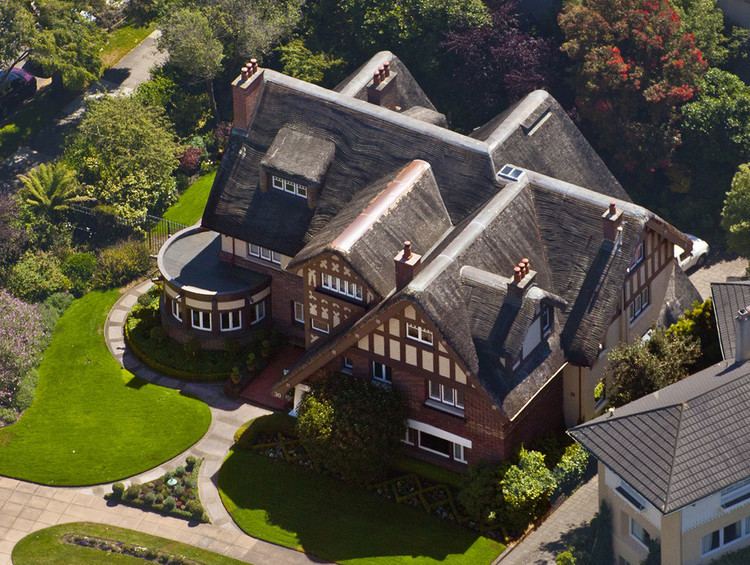 | ||
Presidio Terrace is a small, very wealthy neighborhood in San Francisco which was the first of the master-planned communities built in the western part of the city. It consists of 36 large lots laid out around a single street, consisting of a two way access road leading to a one-way elliptical cul-de-sac. The road is also called Presidio Terrace. Access is off Arguello Boulevard.
Contents
- Map of Presidio Terrace San Francisco CA 94118 USA
- History
- Surroundings
- Racial covenant
- Architecture
- Notable residents
- References
Map of Presidio Terrace, San Francisco, CA 94118, USA
History
Construction started in 1905, just south of and adjacent to the Presidio, a former army base which is now a part of the Golden Gate National Recreation Area. Amenities unusual for residential developments of that time included electric street lights, underground utilities and roads designed for auto traffic.
The neighborhood was developed by the firm of Baldwin & Howell, a leading San Francisco real estate development company. The neighborhood thrived following the 1906 San Francisco earthquake as prosperous families rebuilt outside the destroyed neighborhoods in the eastern part of the city.
Surroundings
Temple Emanu-El was built on an adjacent parcel on the northwest corner of Arguello Boulevard and Lake Street in 1925, and the Little Sisters of the Poor is also close by.
Racial covenant
Presidio Terrace originally was marketed to white residents only: "There is only one spot in San Francisco where only Caucasians are permitted to buy or lease real estate or where they may reside. That place is Presidio Terrace," according to a brochure distributed by the developer. These restrictions later invalidated by a 1948 Supreme Court case, Shelley v. Kraemer which banned enforcement of racial covenants in housing. This led eventually to the integration of the city's neighborhoods.
Architecture
Architectural styles in the neighborhood include Beaux-Arts, Mission Revival, and Tudor Revival. Julia Morgan designed a Italian Renaissance villa in Presidio Terrace in 1909.
Notable residents
Many notable San Franciscans have lived in Presidio Terrace over the years, including San Francisco Mayor Joseph Alioto, Speaker of the House Nancy Pelosi, United States Senator Dianne Feinstein and her husband, financier Richard C. Blum, and novelist and newspaper columnist Merla Zellerbach.
